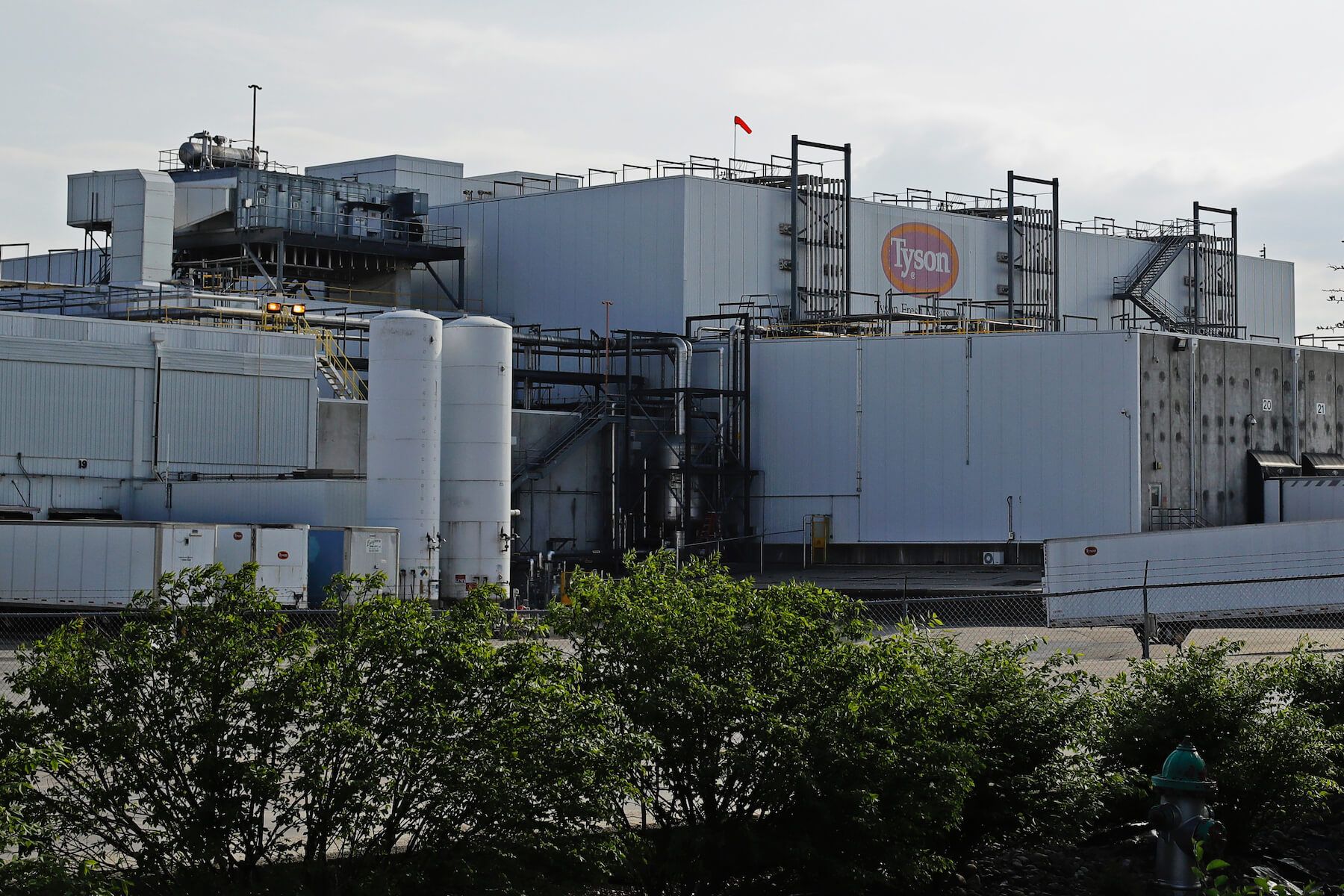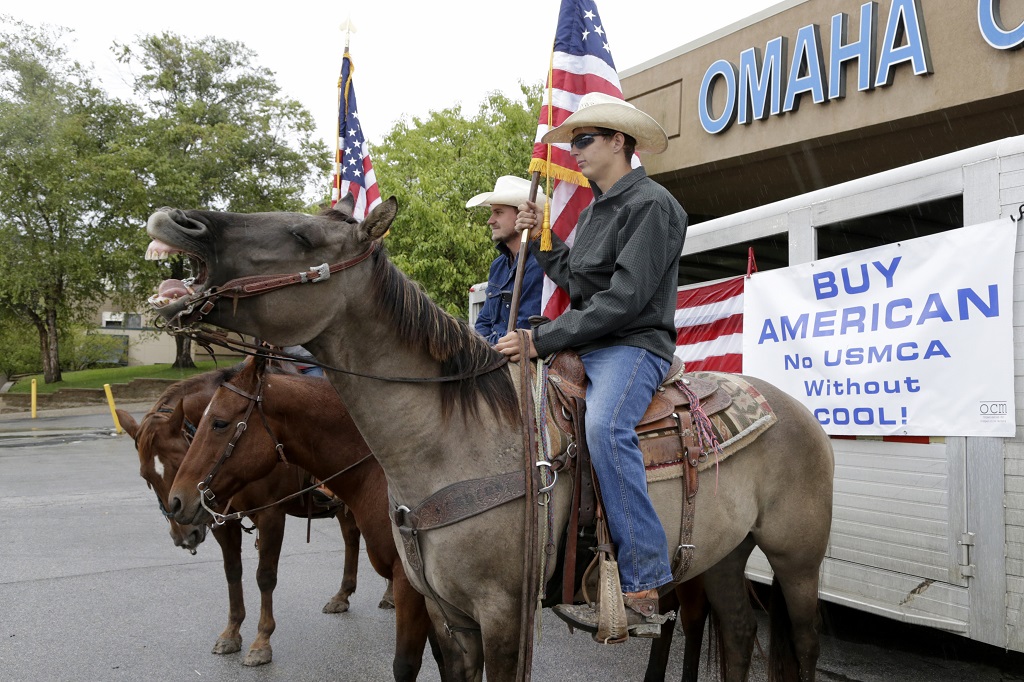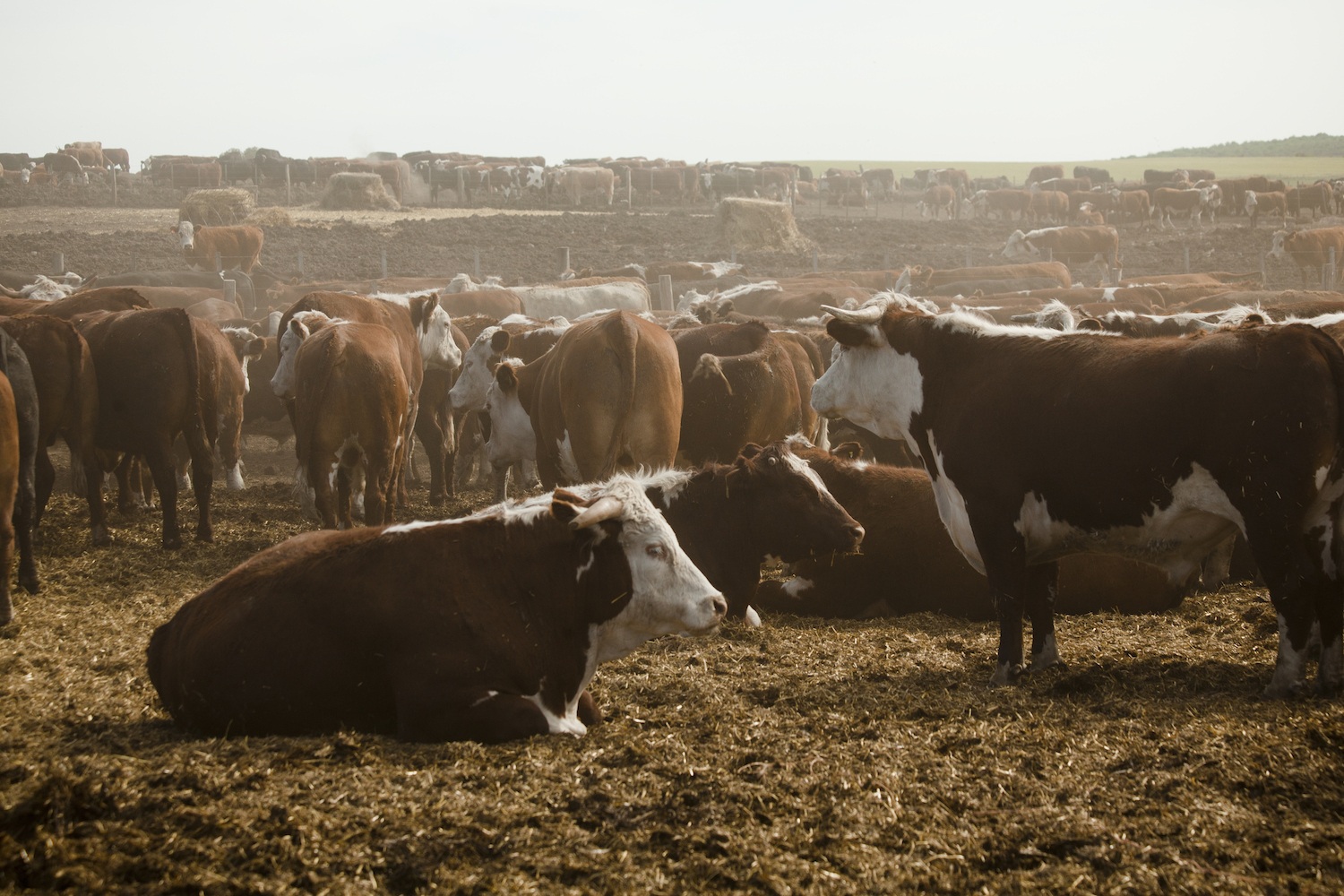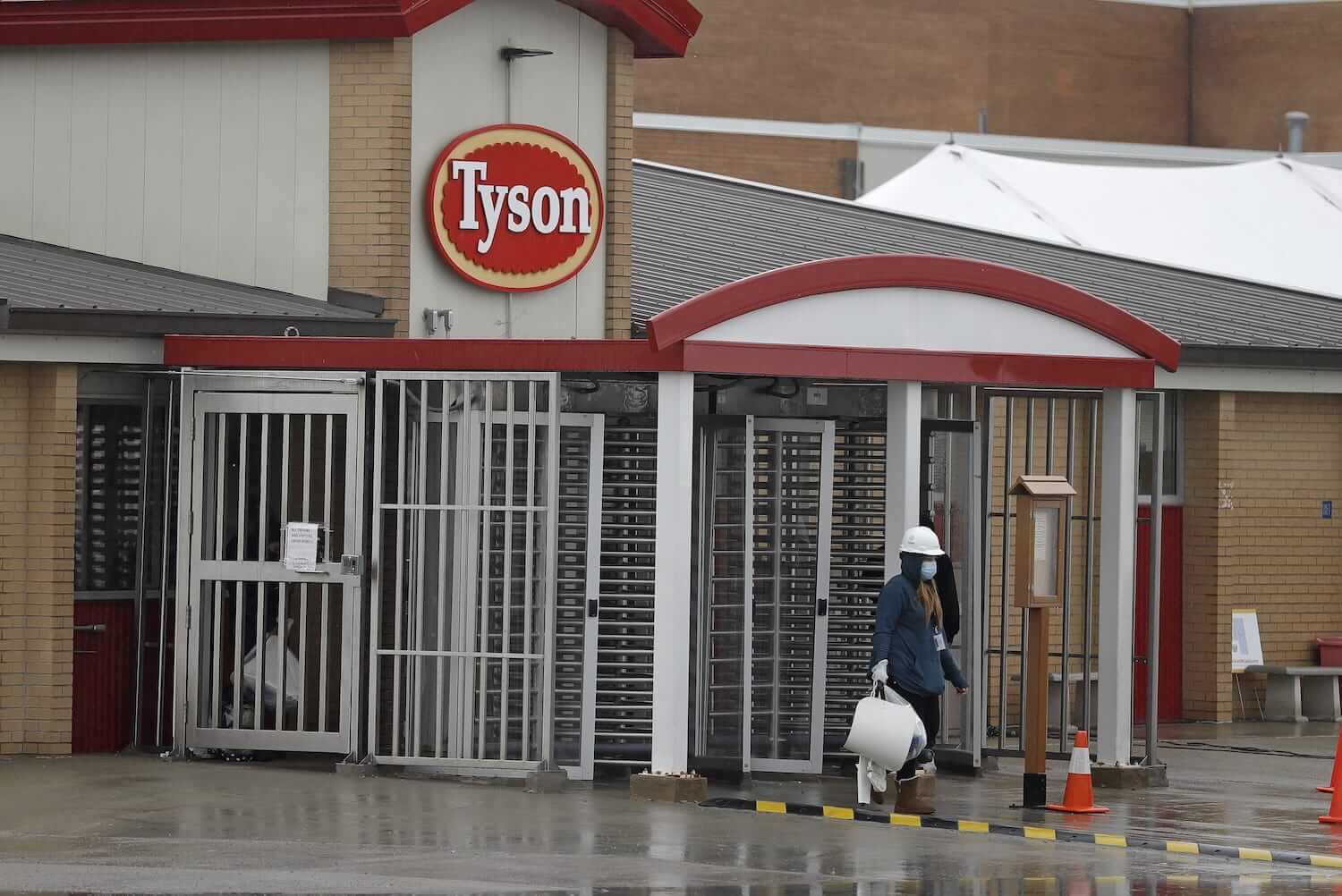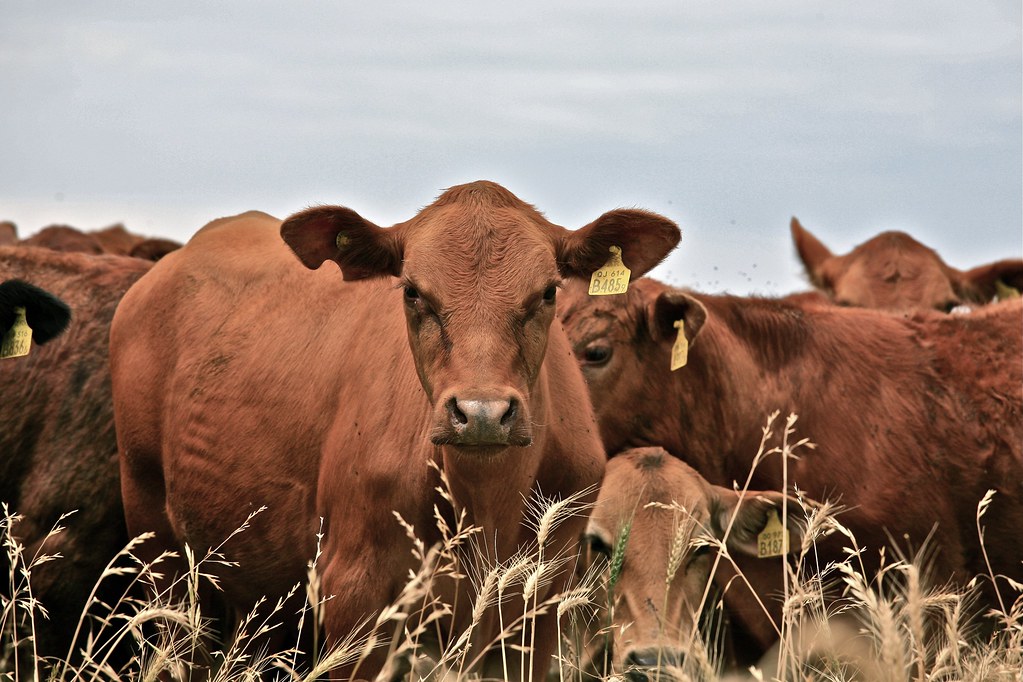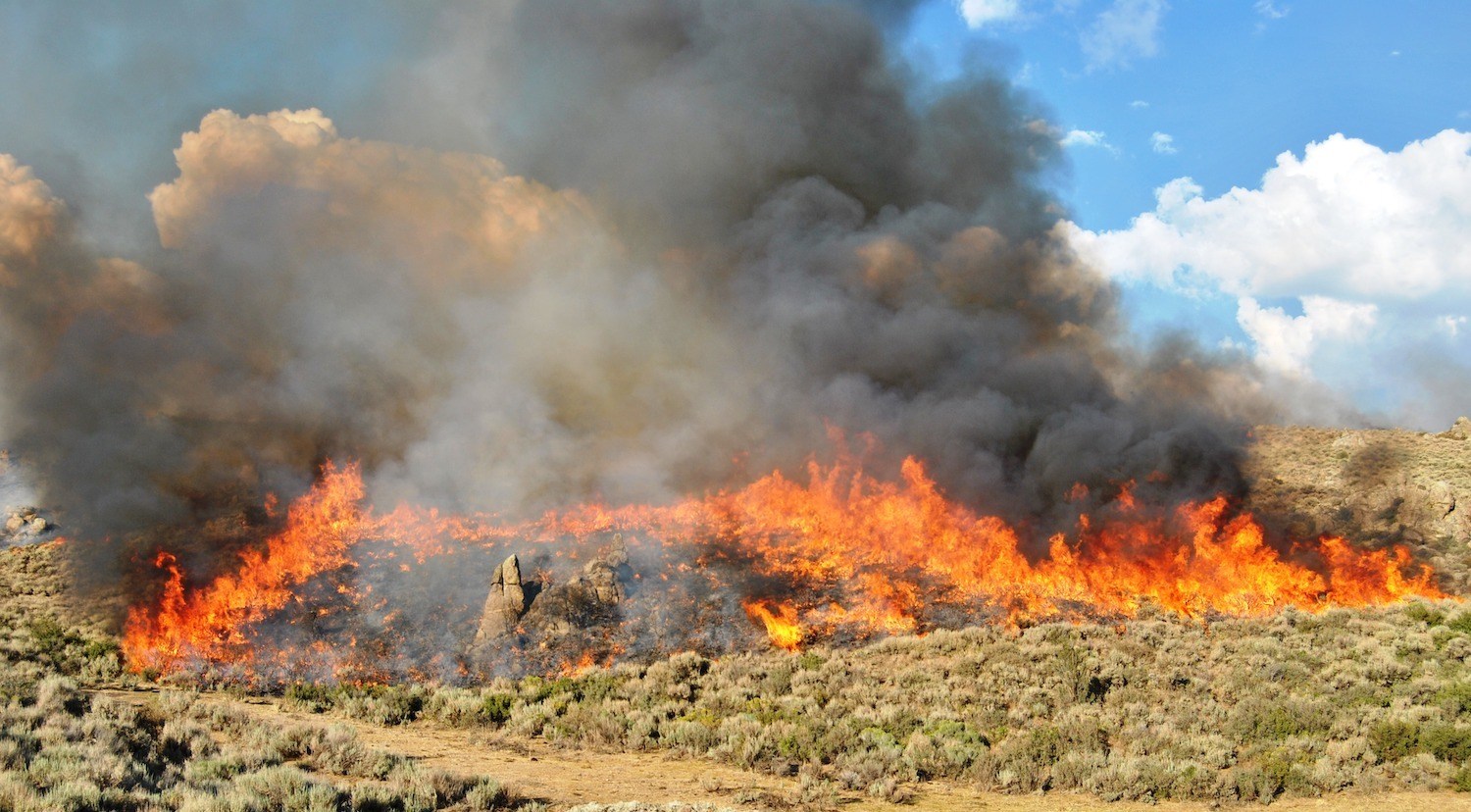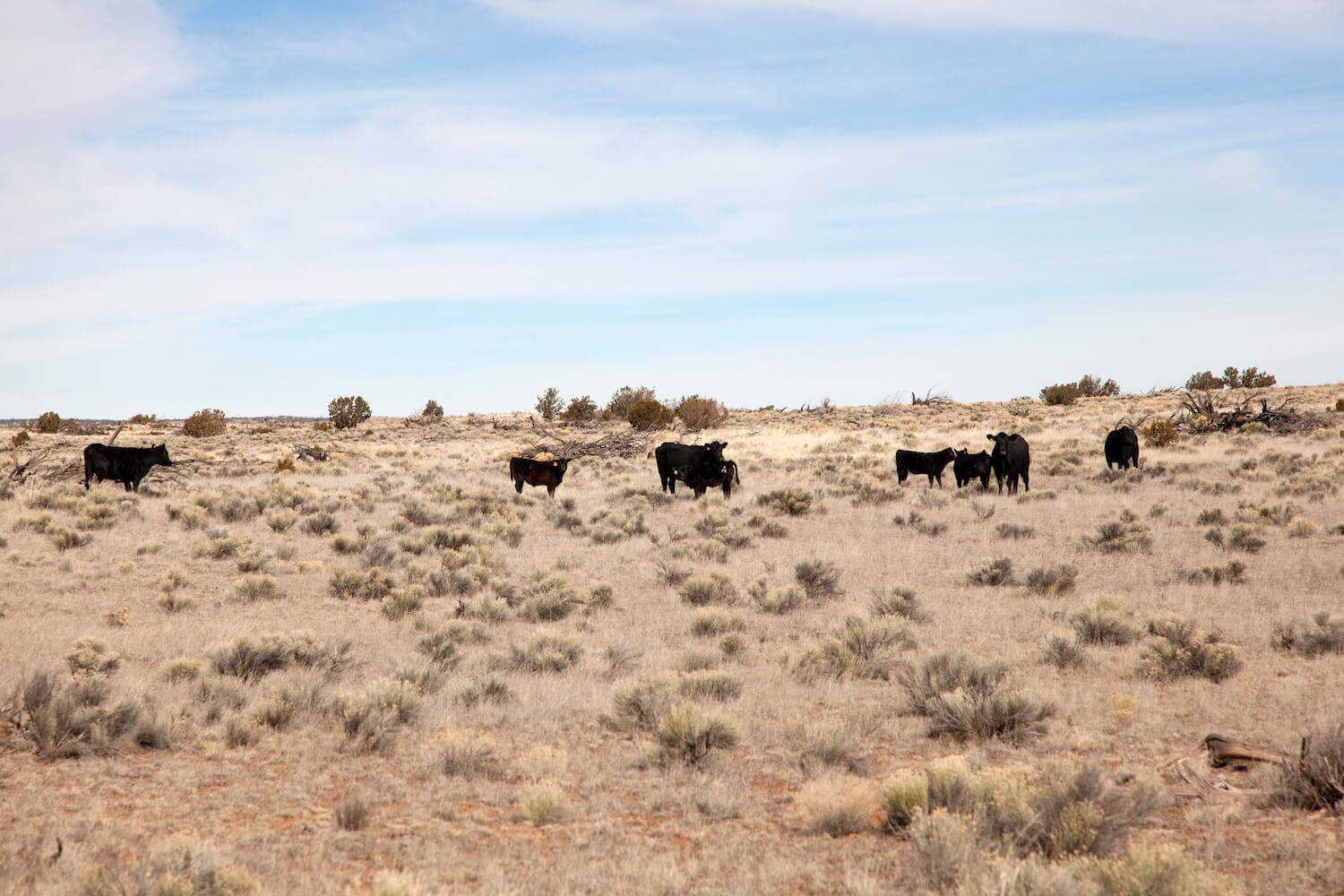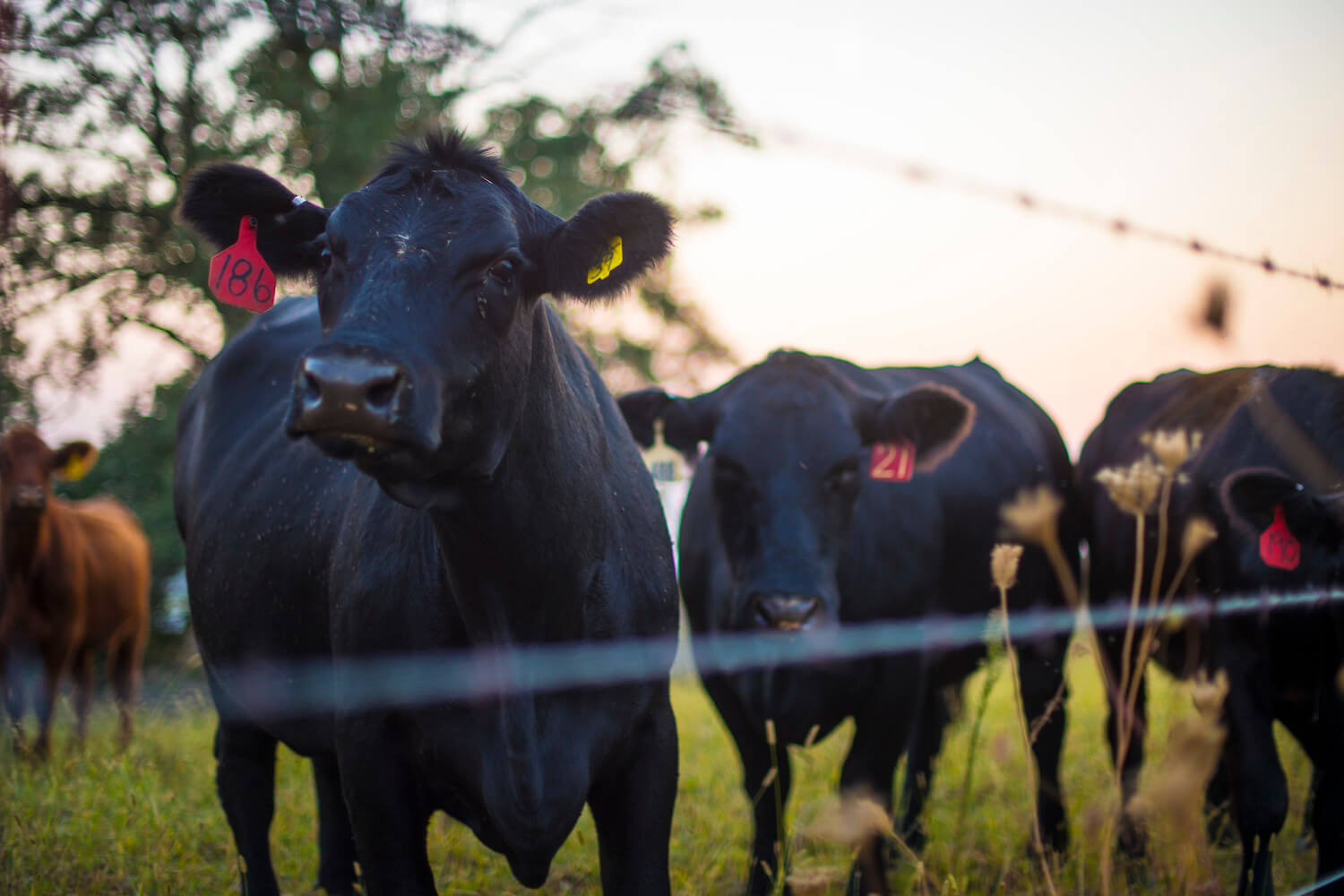
USDA / Preston Keres
Between April and May, producers saw their cattle prices plummet. Meanwhile beef prices at the grocery store nearly doubled.
In the four months between mid-January and mid-May, Larry Kendig, a cattle rancher in Osborne, Kansas, didn’t sell a single cow. At the beginning of the year, as concerns about an impending pandemic took off, cattle prices had started to sag. Then, in early spring—when Covid-19 outbreaks hit meatpacking plants throughout the nation, shutting countless facilities down while killing hundreds and sickening thousands of workers—they bottomed out like Kendig had never seen before.
“Markets started going down and down,” Kendig says. “I couldn’t believe that [coronavirus] would do what it did.”
At home, he continued to incur the costs of keeping his herd alive, like feed and housing expenses, while the value of his cattle dropped steadily as the animals aged and grew to above-standard sizes. In the same period, Kendig watched demand for beef rise, and beef prices at grocery stores skyrocketed to the highest they’d reached in recent memory. The markups felt considerable, but none of them seemed to be flowing back to producers. What was going on?
As producers struggled, beef packers—the powerful middlemen of the meat supply chain—saw their profit margins reach historic highs.
Kendig’s observations were far from anecdotal: As it turns out, live cattle prices plummeted by 18 percent between April and May, as plants shuttered across the country and cows got backed up in feedlots, according to a new Department of Agriculture (USDA) report. (Idling animals also gained a lot of weight while waiting around, about 70 more pounds over last year’s average.) At the same time, the price of processed beef almost doubled. In other words: As producers struggled, beef packers—the powerful middlemen of the meat supply chain—saw their profit margins reach historic highs during the initial peak of the coronavirus pandemic.
To quantify just how much their margins spiked, USDA looked at what’s called a “price spread,” which measures the difference between what processors pay for live cattle and what they charge wholesalers and retailers for a standard box of beef products. Effectively, it’s a measure of the meatpackers’ cut of profits, which can contract and expand depending on supply from producers and demand among consumers. For reference, the average price spread between 2016 and 2018 was $21 per one hundred pounds, USDA notes. By the second week of May this year, price spread had spiked to $279 per hundred pounds.
The remarkable dissonance between what producers can fetch for their herds and beef prices at the retail level affirms the immense market power held by processors—an issue that producers and antitrust advocates have rallied against for years. After all, the cost of feeding and caring for cows doesn’t decrease just because their value does. For some producers, the report’s findings feel like confirmation that they’re getting denied a fair share of profits.
“There was such a big run at the grocery stores for meat and processors were not able to supply as much, so that obviously drove the price of goods up.”
Some analysts told me that the report’s findings aren’t surprising, given the basics of supply and demand. In April, almost half of the country’s beef processing capacity was idled due to Covid-19 outbreaks. That led to backlogs of slaughter-ready cattle on feedlots, in addition to the culling of swine and poultry. An oversupply of animals meant that producers had a lot less leverage when selling to processors, leading to price drops between 20 to 40 percent, one economist estimated. In the meantime, retail meat prices rose due to heightened demand, as Americans stopped going out to eat, panic shopped, and hoarded.
“There was such a big run at the grocery stores for meat and [processors] were not able to supply as much, so that obviously drove the price of goods up,” says Bradley S. Lyle, chief financial officer of Kerns and Associates, which conducts meat market research and analysis. “Profit margins increased substantially.”
The steepest increase took place within that time, when the spread spiked from $66 per one hundred pounds to over $279 per hundred pounds. “Beef packers have had good margins for the past two to three years, but this tripled it,” Lyle says.
“That the spread got bigger doesn’t necessarily mean that we have the use or exercise of monopoly power going on.”
Producers and antitrust advocates argue that live cattle prices would be higher and far more stable if the processing industry wasn’t defined by monopolization. Four of the country’s biggest packers—JBS, Tyson, Cargill, and National Beef—slaughter 80 percent of feedlot cattle. Last spring, a group of ranchers filed a class action lawsuit against the “Big Four,” as they’re known, alleging that the companies conspired to artificially suppress cattle prices despite rising demand for beef. The issue reached a boiling point last summer, when a Tyson plant in Holcomb, Kansas, that processed five percent of the country’s beef output, caught fire, leaving many producers without buyers for their cattle and further depressing prices.
In response, Secretary of Agriculture Sonny Perdue announced an investigation into cattle prices and potential price manipulation, which was later expanded to specifically probe beef pricing during the pandemic. This week’s report summarizes price fluctuations around both events, but doesn’t address the price fixing allegations, which are still under both USDA and Department of Justice scrutiny. According to Wednesday’s report, the price spread more than doubled shortly after the Holcomb fire, reaching $67.17 per hundred pounds, compared to an average of $27.66 per hundred pounds during the time frame in prior years. It was a record high that was broken only by the circumstances of the pandemic.
Though the report’s findings are stark, on their own, they are not evidence of price-fixing, says David Anderson, a professor of agricultural economics and extension economist at Texas A&M University.
“That the spread got bigger doesn’t necessarily mean that we have the use or exercise of monopoly power going on,” he says. To make that call, investigators would need to determine what an economically reasonable price spread would have been during the pandemic plant closures, and then decide whether this spring’s price spreads surpassed that threshold. “Where we might fight is over the magnitude of the change: Did values go too far? Did live animal prices go down too much?”
It’s important to note that processors incurred higher production cost in April and May, due to coronavirus outbreaks. Many plants invested in PPE for employees (too slowly, some workers noted), spread them out along processing lines to maintain social distancing, and offered attendance bonuses to compensate for the risk workers incurred simply by showing up to work. Though Lyle doubts that those higher expenses were comparable to the revenue gains.
“There are added costs that eat into that margin as well,” he says. “But the spread is still there.”
The report found that the price differential has since begun to recede, after Trump ordered plants to reopen and states began to relax social distancing restrictions.
The report found that the price differential has since begun to recede, after Trump ordered plants to reopen and states began to relax social distancing restrictions. The spread halved between May and June—the last month covered by the report—dropping to $119 per hundred pounds. (This is still quite high, relatively.) The report also notes that “it is too early to determine if spread will continue to narrow.”
In terms of potential solutions to the issue of volatile beef prices, USDA has floated the possibility of forming producer cooperatives or selling cattle to smaller meat processors.
However, if the U.S. is hit with a second wave of coronavirus this fall—and public health experts are calling such a scenario a near-certainty—then processing plants might be forced to shut down again. This time around, we’ll know what to expect: Sickness ripping through plants and communities, cows getting overweight on feedlots, supermarkets re-instituting meat limits. The corresponding ripple effects through the food system will be undoubtedly painful for almost everyone involved, from the people toiling in slaughterhouses, to those who raise cattle, to families trying to put dinner on the table.
The meatpackers, it seems, might be the only ones left unscathed.

